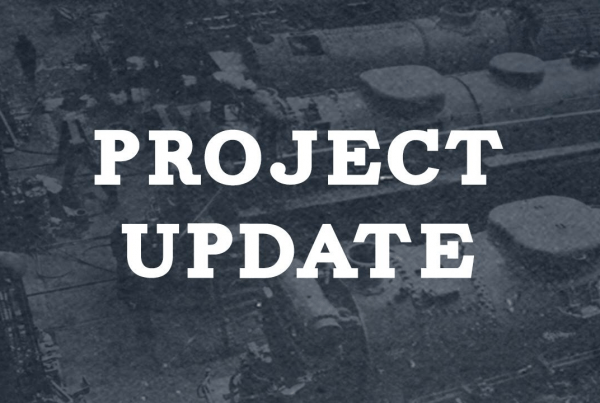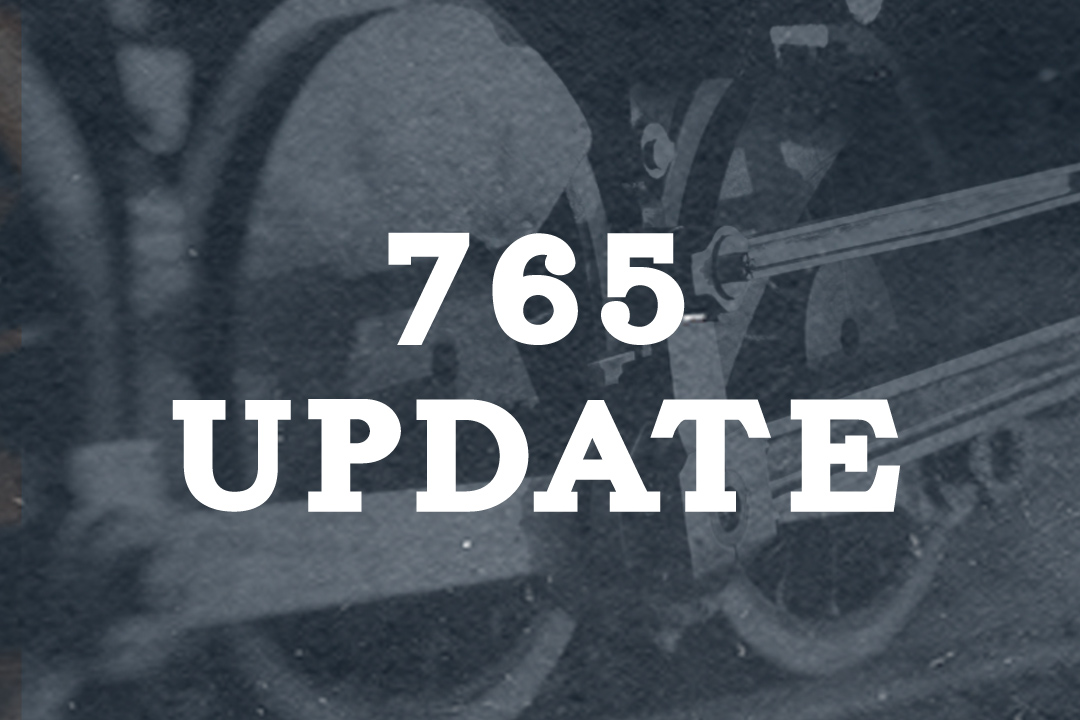Submitted by Steve Winicker.
LAST WEEKENDS SHOP ACTIVITY
We had a relatively productive week. The 765 had the flues blown clean by Jerimie Lung. This is a somewhat arduous job that gets rid of cinders and debris that lands in the flues and is not removed by the exhaust. It also shows the flues have not become plugged. In recent years the flues have remained free of obstructions. Work was begun on replacing the glass tubes in the water glasses and inspecting and opening if needed the passages to the water glass and water column. This work continues.
Other efforts were cleaning and organizing the shop. The boxcar made progress with the end walls being installed. Work also continues on the 358.
UPCOMING ACTIVITIES
Cleaning out the smoke box is the next job that needs to be completed. A small start was made last weekend but now the back end is cleaned out we need to get rid of soot and cinders that have filled in here and there so we can fully inspect the front end of the engine for leaks and wear. Work will continue on the water glasses and the inspection of water passages,
SAFETY SENSE
Confined Space…. A confined space does not necessarily mean a small, enclosed space. It could be rather large, such as a ship’s hold, a fuel tank or a pit.
One of the first defining features of a confined space is it’s large enough to allow a person to enter and perform work. The second defining feature is it has limited means of entry or exit. Entry may be obtained through small or large openings and usually there is only one way in and out. The third defining feature is that confined spaces are not used for continuous or routine occupancy of work.
Although the danger in a confined space is frequently obvious, the type of danger often is not. For example, a confined space with sufficient oxygen initially might become an oxygen-deficient space once a worker begins welding or performing other tasks.
Some of the reasons confined spaces are hazardous are as follows….
- Lack of adequate ventilation can cause the atmosphere to become life threatening because of harmful gases from activities such as coating the space interior with corrosion inhibiting materials. Lack of ventilation can also result in oxygen levels to fall to dangerously unsafe levels.
- The oxygen content of the air can drop below the level required for human life.
- Many gases are explosive and can be set off by a spark, dependent upon the gas concentration.
- Confined spaces often have physical hazards such as baffles and /or intrusive piping systems.
- Egress from the space may be difficult if a worker is injured or otherwise incapacitated.
- Loose materials that can engulf or smother a person. Think cutting coal in the tender.
Before entering any confined space it should be tested to determine if any harmful gases are present and there is sufficient oxygen. There must also be contact with an attendant outside the confined space and sufficient personnel at the ready in case of an emergency.
The specific hazards and required work procedures, including the proper PPEs required, will be covered in the PreJob Briefing in which all workers are required to actively participate.
Confined spaced can be dangerous work locations but by following the proper work and safety rules and using your PPEs those dangers can be managed so no one incurs an injury.


